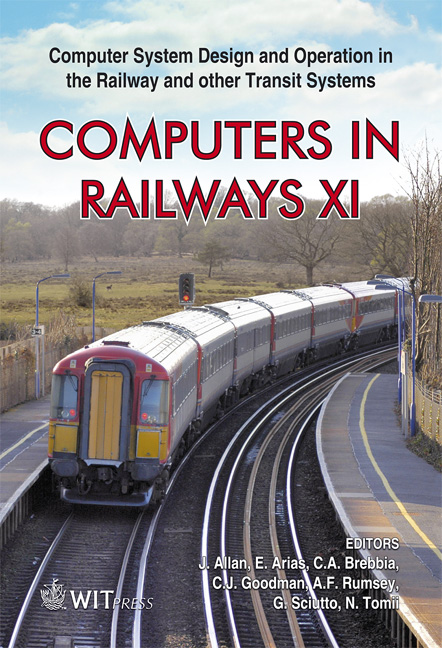The New Driving And Faults Solving Simulator For The Madrid Light Rail System
Price
Free (open access)
Transaction
Volume
103
Pages
13
Page Range
839 - 851
Published
2008
Size
1,532 kb
Paper DOI
10.2495/CR080811
Copyright
WIT Press
Author(s)
L. M. Gutierrez, J. M. Mera, E. Castellote, A. Garcerán & F. Ariza
Abstract
The new Light Rail’s Driving Simulator, presented in this paper, is equipped with the tools needed to train staff to drive the new rolling stock and control traffic on the new Madrid Light Rail lines ML1, ML2 and ML3. In the capacities granted to the set of simulators not only is the reproduction of the whole trains emphasized, but also the capacity to make training exercises with train failures (approximately 400 different types) or incidences (approximately 50 different types). Light Rail’s new Driving Simulator represents an enormous step forward in training capacity through simulated environments allowing, for the first time, comprehensive training for staff when carrying out joint exercises. The full Simulator integrates several different stations: • One Instructor Station. • One Real Driver’s Cab: a scale model of a car with integrated real equipment, a four channel visual system and an environmental audio system. • 12 Driver’s Training Station: a virtual simulator with basic real controls. • 12 Traffic Control Inspector Station (integrated in the Driver’s Training Station). These training stations allow the uninterrupted running of exercises in: • Joint driving of coupled Train Units. • Joint or individual driving of uncoupled Train Units. • Coupling and uncoupling units. • Joint driving and operating exercises where there may be simultaneously: two drivers in two train units, a Traffic Control Inspector. The simultaneous use of these stations enables all the staff involved in operating a line to be reproduced; this leads to the work teams becoming integrated so that each person taking part in a joint exercise can understand the problems faced by the other workers. The Light Rail simulators are integrated as a whole to provide centralised training management, resulting in a single source of information for the training plans and training sessions carried out by trainees in the different simulators. This means that there is a single comprehensive training control tool available. The developed model allows the visualization of the state for the different electrical and pneumatic circuits that constitute the trains. This allows the students to understand the internal operation of the train and the behaviours of the vehicles in the different failures that can be displayed. Keywords: computer-based training, driving simulation.
Keywords
computer-based training, driving simulation.





